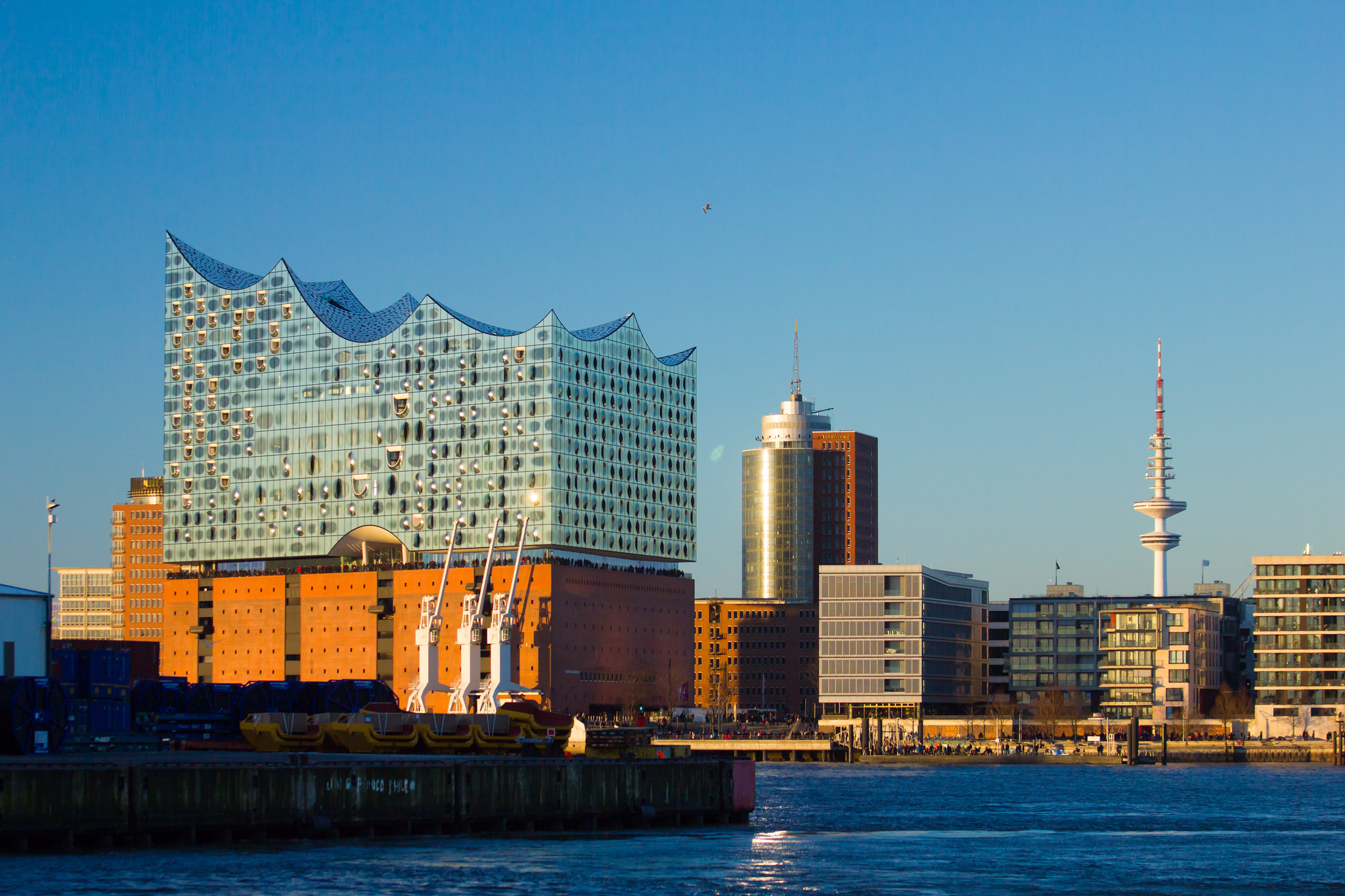The Elbphilharmonie is a striking concert hall and architectural landmark located in Hamburg, Germany. Designed by Swiss architecture firm Herzog & de Meuron, it opened in January 2017 after a decade of construction. The building sits atop an old warehouse on the Elbe River, featuring a bold, wave-like glass structure that rises above the brick base. The Elbphilharmonie houses three concert venues, a hotel, apartments, and a public viewing platform. Its main auditorium, renowned for its exceptional acoustics, seats 2,100 people and is designed in a “vineyard” style with terraced seating surrounding the stage. The Elbphilharmonie has quickly become an iconic symbol of Hamburg and a major cultural destination, attracting music lovers and architecture enthusiasts from around the world.
The Elbphilharmonie, affectionately known as “Elphi” by locals, stands as a testament to Hamburg’s bold vision for the future and its rich musical heritage. This architectural marvel, perched atop an old warehouse on the banks of the Elbe River, has become an iconic symbol of the city since its grand opening in 2017. The building’s striking silhouette, reminiscent of a giant crystal wave or a billowing sail, has captured the imagination of visitors and architecture enthusiasts alike.
At first glance, the Elbphilharmonie’s most striking feature is its juxtaposition of old and new. The base of the structure is a former cocoa warehouse, built in the 1960s, which has been repurposed and integrated into the modern design. Atop this sturdy foundation sits a gleaming glass structure that seems to defy gravity, its facade composed of 1,100 individually shaped glass panels that reflect the sky and surrounding water.
The mastermind behind this architectural wonder is the Swiss firm Herzog & de Meuron, known for their innovative and often unconventional designs. Their vision for the Elbphilharmonie was to create a building that would not only serve as a world-class concert hall but also as a public space that would bring people together. To achieve this, they incorporated a publicly accessible viewing platform, known as the Plaza, which offers breathtaking panoramic views of Hamburg’s harbor and cityscape.
One of the most remarkable aspects of the Elbphilharmonie’s design is its acoustics. The main concert hall, which seats 2,100 people, is a marvel of engineering and artistry. The walls and ceiling are covered with 10,000 uniquely carved gypsum fiber panels, each designed to reflect sound in a specific way. This “white skin,” as it’s called, ensures that sound is distributed evenly throughout the hall, creating an unparalleled listening experience for concertgoers.
The construction of the Elbphilharmonie was not without its challenges. The project faced numerous delays and budget overruns, with the final cost ballooning to over 800 million euros, more than ten times the original estimate. Despite these setbacks, the end result has been widely praised as a triumph of modern architecture and urban planning.
One of the most innovative features of the building is its foundation. To support the massive glass structure atop the old warehouse, engineers had to reinforce the existing building with 1,745 reinforced concrete piles, each driven up to 130 feet into the ground. This complex foundation ensures that the building can withstand the forces of wind and water in its exposed harbor location.
The Elbphilharmonie’s unique design extends to its energy efficiency as well. The building incorporates a range of sustainable features, including a sophisticated heating and cooling system that uses the waters of the Elbe River. The glass facade also plays a role in temperature regulation, with specially designed panels that can open to allow natural ventilation.
Since its opening, the Elbphilharmonie has become more than just a concert hall. It’s a cultural hub that has revitalized Hamburg’s HafenCity district and become a symbol of the city’s ambition and creativity. The building hosts not only classical concerts but also jazz, world music, and pop performances, attracting diverse audiences and breathing new life into the local music scene.
As visitors ascend the long escalator that leads to the Plaza, they are transported from the bustling city below to a world of architectural wonder and musical excellence. The Elbphilharmonie stands as a shining example of how bold design and innovative engineering can come together to create a space that inspires, entertains, and brings communities together.
The Elbphilharmonie stands as a remarkable architectural and cultural landmark in Hamburg, Germany. Its striking design, combining a historic warehouse base with a modern glass structure, has transformed the city’s skyline and become an iconic symbol of Hamburg’s cultural renaissance. The concert hall’s exceptional acoustics and diverse programming have elevated it to world-class status among music venues. Despite initial controversies surrounding its construction costs and delays, the Elbphilharmonie has proven to be a significant draw for tourists and music enthusiasts alike, contributing to Hamburg’s cultural and economic growth. Its success demonstrates the potential for bold architectural projects to revitalize urban areas and create new cultural focal points for cities.

